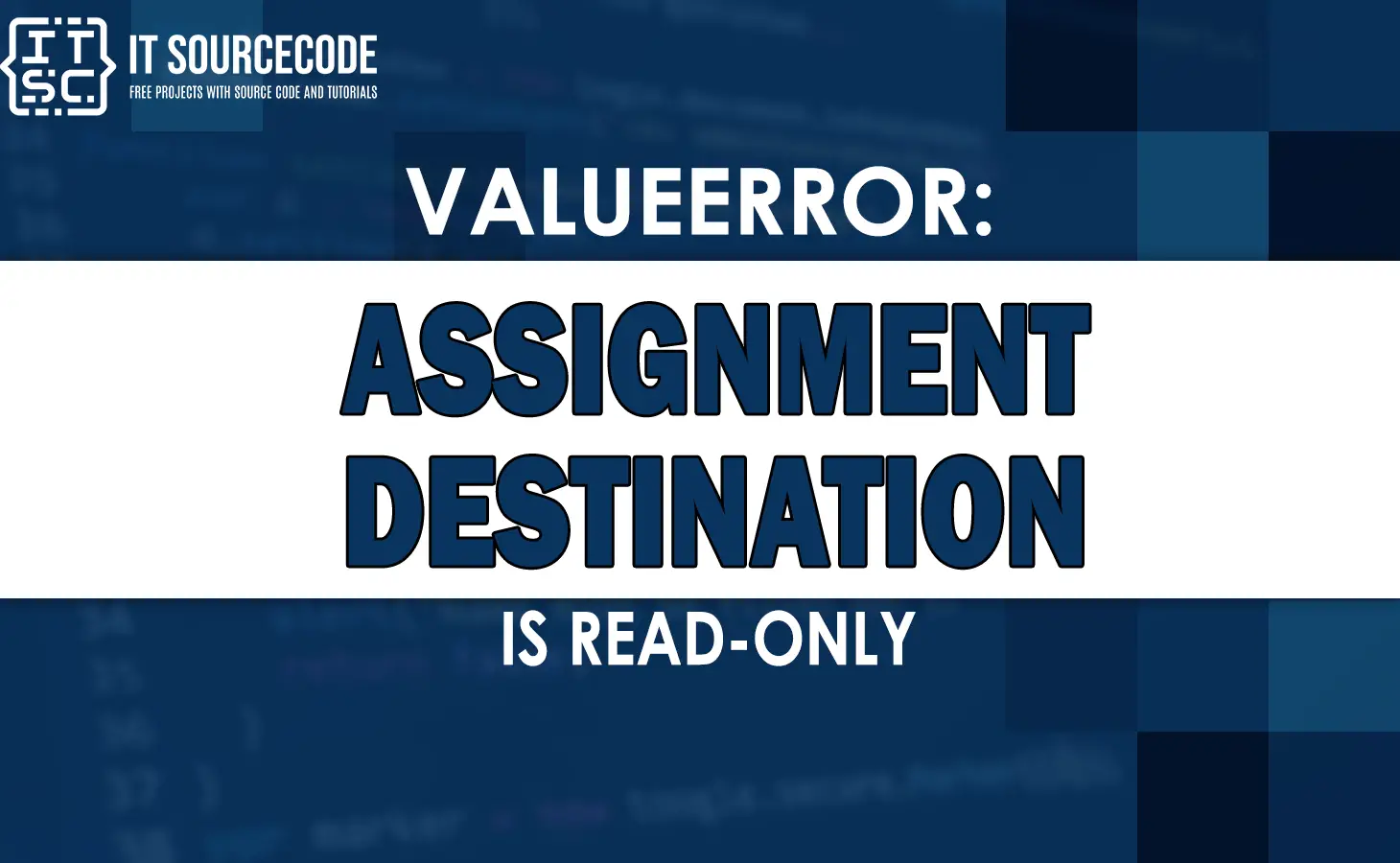One of the errors that developers often come across is the ValueError: assignment destination is read-only.
This error typically occurs when you try to modify a read-only object or variable.
What does the ValueError: assignment destination is read-only error mean?
This error occurs when you try to modify a read-only object or variable in your code. The error message indicates that the assignment destination is restricted to being read-only.
How the Error Occurs?
These are the following examples of how the error occurs.
Example 1: Modifying an Immutable Tuple
my_tuple = (1, 2, 3)
my_tuple[0] = 10 - The code creates a tuple called “my_tuple” with the values 1, 2, and 3.
- Tuples are immutable, meaning their elements cannot be changed once they are created.
- The line “my_tuple[0] = 10” attempts to modify the value at index 0 of the tuple to 10, which is not allowed and will result in a valueerror.
Example 2: Attempting to Modify a String
my_string = "Hello, World!"
my_string[0] = 'J'The code attempts to change the first character of a string but produces a valueerror because strings cannot be directly modified.
Example 3: Assigning to a Constant
import math
math.pi = 3.14The code example attempts to assign a new value (3.14) to the constant math.pi in Python.
However, in Python, constants are typically immutable and cannot be modified once defined.
Therefore, this code will likely raise a valueerror .
Example 4: Altering an Immutable Data Structure
my_dict = {'key': 'value'}
my_dict['key'] = 'new_value'This code example demonstrates how to modify a value in an immutable data structure in Python.
It starts with a dictionary called “my_dict” that has a key-value pair of ‘key‘ and ‘value‘.
The code then changes the value associated with the ‘key’ to ‘new_value‘ by assigning it directly using indexing.
Solutions for ValueError: assignment destination is read-only
Here are some solutions to solve the ValueError: assignment destination is read-only:
Solution 1: Use Mutable Data Structures
Instead of using immutable data structures like tuples or strings, switch to mutable ones such as lists or dictionaries.
Mutable objects allow modifications, eliminating the read-only error.
For example:
my_list = [1, 2, 3]
my_list[0] = 10Solution 2: Reassign Variables
If you encounter the valueerror while attempting to modify a variable, try reassigning it with a new value.
This method can help you resolve the read-only restriction.
For example:
my_variable = 10
my_variable = 20Solution 3: Check Documentation and Restrictions
In some cases, certain objects or variables are intentionally designed to be read-only.
It’s important to consult the documentation or source code to understand any restrictions required.
Make sure that the object you’re attempting to modify is meant to be changed.
Solution 4: Use a Copy or Clone
If the object you’re working with is meant to be read-only, consider creating a copy or clone of it.
By doing this, you can modify the duplicate without affecting the original read-only object.
For example:
my_tuple = (1, 2, 3)
my_modified_tuple = list(my_tuple)
my_modified_tuple[0] = 10
Solution 5: Identify Context-Specific Solutions
The ValueError: assignment destination is read-only error that can be context-specific.
Analyze the specific context where the error occurs and seek solutions to that scenario.
Understanding the possible cause will aid in finding a proper resolution.
Solution 6: Seek Help from the Community
If all the solutions are not working, don’t hesitate to reach out to the programming community for assistance.
Online forums, developer communities, and platforms like Stack Overflow can provide valuable insights and guidance from experienced programmers.
Frequently Asked Questions
To resolve this valueerror, you can apply different solutions such as using mutable data structures, reassigning variables, checking documentation and restrictions, using copies or clones, identifying context-specific solutions, or seeking help from the programming community.
The error arises because the variable you are attempting to modify is marked as read-only.
It could be intentionally designed this way or due to a restriction imposed by the programming language or framework you are using.
In some cases, you can convert a read-only object into a writable one by using techniques like creating a copy or clone of the object.
However, this depends on the specific context and the restrictions imposed on the program.
Yes, there are similar errors that you may encounter in different programming languages.
For example, in JavaScript, you might encounter the error TypeError: Assignment to a constant variable when trying to modify a constant.
Conlcusion
The ValueError: assignment destination is read-only error can be encountered when attempting to modify read-only objects or variables in your code.
By following the solutions provided in this article, such as using mutable data structures, reassigning variables, checking restrictions, making copies or clones, considering context-specific solutions, and seeking community help, you can effectively resolve this error.

